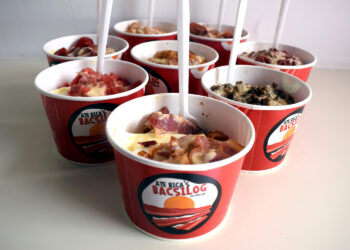Nothing says hot summer season days like a scoop of one of our favorite frozen cakes: ice cream. If you want to take pleasure in your homemade recipes, chemist Matt Hartings offers you permission to play with your delicious chilled masterpieces.
“I recognize that we have all been informed as children to now not to play with our food. But, messing around as we cook it is a terrific way to make our food a little higher, and an outstanding way to do and research a little bit of chemistry,” says Hartings, a partner professor of chemistry at American University and creator of Chemistry in Your Kitchen.
Concocting the creamiest, smoothest batch of ice cream comes right down to the interactions among the tiny, little debris—the chemicals—that makeup all our meals, Hartings explains to Science Friday.
“They wiggle; they wobble; they interact with all the different molecules that they come into contact with,” says Hartings. “Exploiting those molecular hookups is the important thing to making any meal higher. And we’re going to take a look at how that’s done with ice cream.”
Below, Hartings writes about how you may improve your self-made ice cream recipes with a helping of chemistry.
Begin With The Basics
There are loads of ice cream recipes out there, and some of them are probably quite ideal the way they are. But we’re going to dive into one recipe to observe all the crucial parts and discuss what we can do to alter the recipe a bit. It’s a good way to understand how every component needs to be treated while we make ice cream. It’s also a great way to know the way to technique a recipe when we’ve got a nutritional restriction, food hypersensitivity, or if we need to try something new.
Mix the egg yolks and sugar with a whisk or mixer until combined and beginning to lighten in shade.
Pour 1 cup of the half-and-half into the egg/sugar mixture at the same time as stirring.
Add the half-and-1/2/egg/sugar aggregate to a pan and warmth, constantly stirring, until a custard bureaucracy and the liquid leaves a thick film at the back of a wooden spoon.
Pour this aggregate right into a bowl containing the opposite 2 cups of 1/2-and-half.
Add the vanilla to the mixture.
Cool in a refrigerator.
Freeze in an ice cream maker in step with the manufacturer’s specs.
Think Like A Chemical
Before we begin to play with our ice cream, we want to break down and spot what varieties of chemical substances we’re working with. For simplicity, we’ll break these down into the kinds of molecules listed on a dietary label. These include carbohydrates (the combination of starches, nutritional fiber, and sugars), fats, and protein.
Three cups of 1/2-and-half (726 grams in general) include 31.2 grams of carbohydrates, 83.4 grams of fat, 21.6 grams of protein, and around 590 grams of water.
5 massive egg yolks (eighty-five grams in general) contain five grams of carbohydrates, 25 grams of fats, 15 grams of protein, and forty grams of water.
¾ cup of sugar (one hundred fifty grams overall) includes one hundred and fifty grams of carbohydrates (all of them candy, delicious sugar, obviously).
An accurate ice cream (a terrific creamy ice cream) goes to have small ice crystals. Imagine a stable bite of 1/2-and-half pulverized into a zillion (very technical period) microscopically tiny pieces. That’s what we’re going for. To make this appear, we want to keep those water molecules from doing what they need to do: cling to other water molecules.
At room temperature, water molecules have so much power that they zip past one another, twirling and swirling around, slowing down just enough to give one another a water-molecule model of a high-five. As the temperature drops, the water molecules are prevented for a chunk longer from dancing with one another. Even lower (freezing temperatures), and they’ll all huddle collectively and make an ice crystal.
Before we start to freeze our ice cream, the water molecules are, to some extent, separated from each other through all the other substances. We’ve got alternatives for making small ice crystals in our ice cream:
Option 1: Freeze our ice cream simply speedy so the water molecules don’t have a chance to transport around and discover different water molecule buddies to freeze with. This option is extremely good… in case you’ve got access to a restaurant-grade ice cream maker or some liquid nitrogen.
Option 2: Use an additive to slow the water molecules down so they can’t get to one another. This is what the general public uses after they make their ice cream, and in which the one’s egg yolks come in handy.








